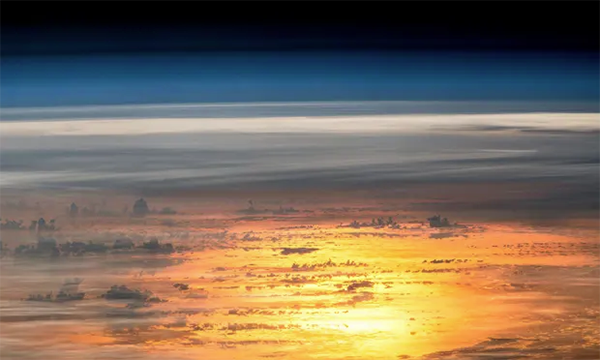A .gov website belongs to an official government organization in the United States.
A lock () or https:// means you've safely connected to the .gov website. Share sensitive information only on official, secure websites.
22 August 2024 A new paper focuses on feasibility and impacts of Earth-cooling stratospheric aerosol injection. Scientists for several years have studied the theoretical effectiveness of injecting sulfur dioxide into the stratosphere to reflect heat from the Sun and offset Earth’s warming temperatures. But they also want to ensure that the solar geoengineering approaches being studied are evaluated for their technical feasibility, as well as their cooling potential and possible ecological and societal side effects. To guide future work, an international team of scientists led by the U.S. National Science Foundation National Center for Atmospheric Research (NSF NCAR) has published a paper with specific recommendations for evaluating proposals to inject sulfur dioxide, which is known as stratospheric aerosol intervention (SAI). The paper also suggests criteria for discontinuing those scenarios that are not feasible because of scientific, technical, or societal issues. "The goal is to work toward an assessment that can be used to identify the most feasible and legitimate scenarios, based on both how much they reduce natural and societal risks as well as any unwanted side effects," said NSF NCAR scientist Simone Tilmes, the lead author. "If society were to ever consider implementing SAI, it is imperative that we provide the best possible scientific understanding to policy makers and the public." The paper, based on work funded by NSF and NOAA, was published in Oxford Open Climate Change. Once injected into the stratosphere, sulfur dioxide would form sunlight-reflecting sulfate aerosols. Previous studies, drawing on computer modeling and observations of large volcanic eruptions, have shown these aerosols would have a cooling effect similar to that of a major volcanic eruption. The injections could continue to cool Earth for decades or even centuries, buying time until heat-trapping greenhouse gases in the atmosphere return to lower levels. The previous research, however, has also emphasized the potential risks of SAI, such as changing the stratospheric ozone layer and altering global precipitation patterns. Since such injections cannot perfectly offset the impacts of greenhouse gas emissions, Tilmes and her co-authors write that informed policy decisions require a comprehensive understanding of the benefits and risks of SAI. They emphasize the need for a research and governance structure, with fair representation from both the Global South and North, to oversee SAI research and technology developments. "Research on various solar geoengineering methods has been going on for a few decades now, but there hasn't been a formal assessment collating all the information in one place suitable for policy makers and the public," said NOAA scientist Karen Rosenlof, a co-author of the new paper. "It’s time for such an assessment to occur, covering the criteria described in this paper, and repeated on a regular basis." The paper proposes eight research criteria for assessing SAI developments. The criteria are: The paper recommends issuing assessment reports about SAI developments every few years with globally representative participation. The criteria can also be applicable to other solar radiation modification proposals, such as the brightening of marine clouds. "The goal of these criteria is to promote optimal approaches from a climate perspective while carefully weighing the benefits and risks and making sure to include the perspectives of underrepresented groups and the Global South," Tilmes said. Tilmes, S., K. Rosenlof, D. Visioni, E.M. Bednarz, T. Felgenhauer, W. Smith, C. Lennard, M. Diamond, M. Henry, C. Harrison, and C. Thompson, Research criteria towards an interdisciplinary Stratospheric Aerosol Intervention assessment, Oxford Open Climate Change, doi:10.1093/oxfclm/kgae010, 2024. With surface temperatures already reaching unprecedented highs, resulting in significant adverse consequences for societies and ecosystems, there are increasing calls to expand research into climate interventions, including Stratospheric Aerosol Intervention (SAI). However, research and dissemination are currently fragmented and would benefit from a comprehensive international assessment of the current state of knowledge regarding impacts, risks, and recommendations for future SAI research directions. The goals of a scientific assessment would be to describe the current state of SAI research and evaluate proposed scenario-strategy combinations through well-designed evaluation guidelines. The suggested iterative approach would integrate natural and social science considerations to guide future research toward more plausible scenarios and strategy development to reduce uncertainties and minimize the risks of SAI. Here, we outline multidisciplinary research criteria to guide the assessment process and provide an overview of the benefits and risks of proposed SAI applications. We group these criteria into three categories: (1) technical and design requirements, (2) response and impacts, and (3) societal considerations. Including all three categories in a comprehensive assessment of potential SAI applications outlined here promotes enhanced interdisciplinary and international collaborations, intentionally engaging the underrepresented Global South. The assessment structure further promotes the need for recurring reports every few years with globally representative participation and could also be applicable to other Solar Radiation Modification methods or combined approaches. Such assessments are necessary to align research with considerations for decision-makers and the public on the feasibility of SAI in reducing the impacts of climate change and its potential societal and ecological trade-offs.2024 News & Events
Scientists propose guidelines for solar geoengineering research
adapted from the story by NCAR Communications
Mimicking volcanic eruptions
Abstract